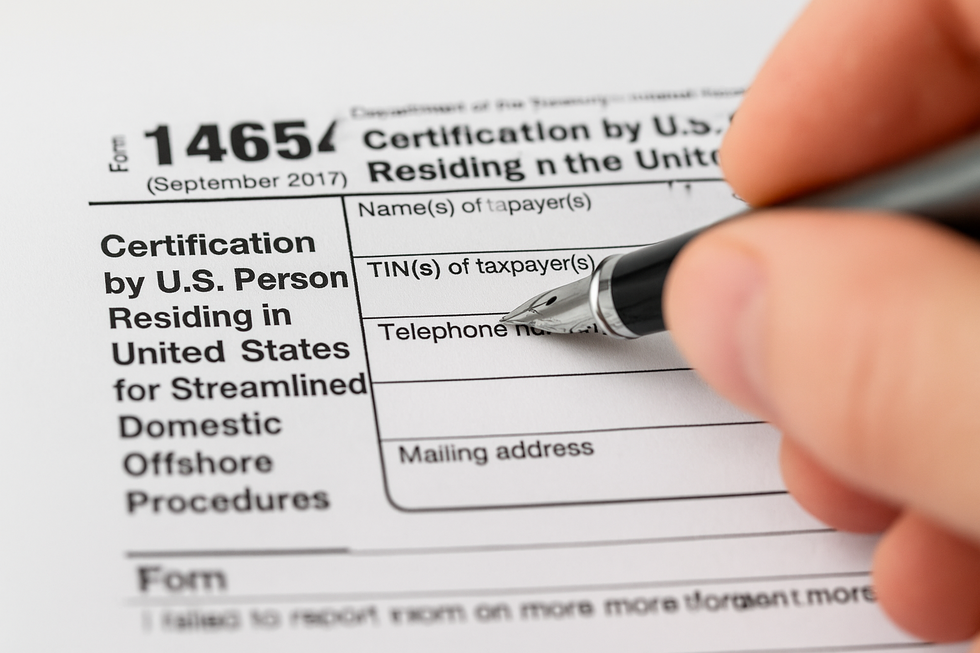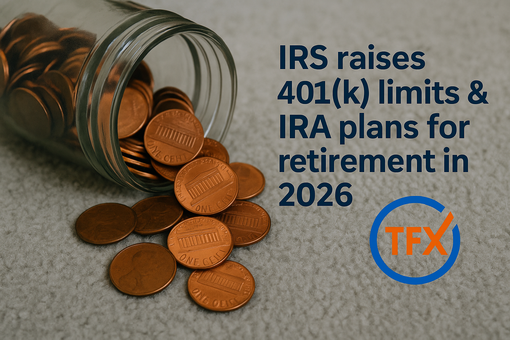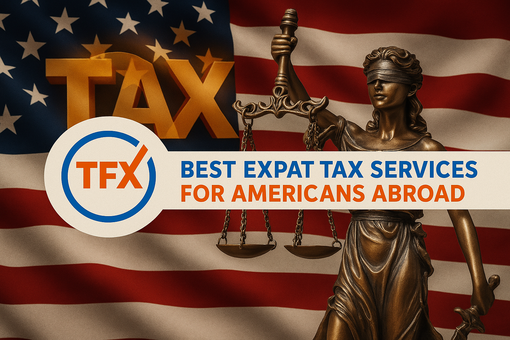Form 14654 explained: How to certify non-willfulness under the IRS Streamlined Procedures

In 2014, the IRS changed the course of offshore compliance by launching the Streamlined Domestic Offshore Procedures – a relief path for US residents who had unknowingly failed to report foreign income and accounts. It offered a lifeline to those who made honest errors rather than deliberate omissions, replacing fear of massive penalties with a clear, structured way to make things right.
At the heart of that process is IRS Form 14654, the certification that proves a taxpayer’s non-willfulness and calculates the 5% miscellaneous penalty on unreported foreign assets. While the Streamlined Foreign Offshore Procedures use Form 14653 for Americans living abroad, Form 14654 applies only to domestic taxpayers bringing their filings back into full compliance.
In this article brought to you by Taxes for Expats, we will dive into:
- What Form 14654 covers, how the 5% base is computed, and why the signed certification controls eligibility and penalty relief.
- Who needs it, the three-year return window, the six-year FBAR span, and how to package payment and filings so the submission moves without delay.
- How it differs from Form 14653 and when the Streamlined Foreign Offshore Procedures apply instead.
- You will have key contacts and logistics, including the VDP hotline and FinCEN’s automatic FBAR extension to October 15.
So learn about our services or contact us for continued guidance on this domestic IRS amnesty program.
What is Form 14654
Many taxpayers feel anxious when they hear the word “penalty.” That fear is common when trying to fix offshore reporting mistakes. During a webinar on the Streamlined Procedure, Wendy Christiansen, CPA, Tax Supervisor at Taxes for Expats, shared a message that put many minds at ease:
“The domestic offshore procedure does carry a 5% penalty automatically, but for all the returns I’ve prepared under this procedure, it’s nothing compared to the penalties that could be assessed.”
Her point explains the goal of IRS Form 14654. It’s the certification that lets taxpayers living in the United States resolve foreign income tax issues through the Streamlined Domestic Offshore Procedures. The form – officially called the Certification by US Person Residing in the United States for Streamlined Domestic Offshore Procedures – shows that any filing mistakes were non-willful. When you sign it, you confirm that your returns are corrected, your FBARs are filed, and you agree to the single 5 percent penalty that replaces much higher offshore penalties.
Who qualifies to file Form 14654
Courts often look at intent when judging FBAR and tax mistakes. In Bittner v. United States, the Supreme Court said penalties for non-willfulness apply per report, not per account. That same fairness shapes who can use the Streamlined Domestic Offshore Procedures and file IRS Form 14654 to fix past filing issues.
- US citizens or green card holders living abroad. Many people living or working overseas later move back and realize they missed tax filings. Those now living in the US use the domestic streamlined path, while people still abroad use Form 14653. The submission includes three amended income tax returns and six FBARs filed with Form 14654.
- Those who missed filings for non-willful reasons. The IRS defines non-willfulness as an honest mistake, bad advice, or simple misunderstanding. The streamlined option lets taxpayers correct errors, pay what they owe, and stay compliant without heavy penalties.
- Not under IRS civil exam or criminal review. Anyone currently under IRS audit or investigation cannot use Form 14654. Those with willful behavior or complex offshore accounts must apply under the IRS Criminal Investigation Voluntary Disclosure Practice instead. The streamlined program stays open for taxpayers who acted in good faith.
Key sections of Form 14654
Form 14654 shows the IRS exactly what went wrong and how you are fixing it. Use this quick map to grasp each part before you sign under penalties of perjury.
Personal information and taxpayer details
List legal names, taxpayer identification numbers, and current addresses exactly as they appear on your returns. Joint filers certify together unless filing separate amended returns. IRS Form 14654 also asks for contact details so the IRS can match your certification with the rest of your streamlined package.
Non-willfulness certification statement (the most critical section)
This is your factual narrative that explains why past failures were non-willful under the Streamlined Domestic Offshore Procedures. Keep it concrete with dates, account origins, advisors involved, and the moment you learned the rules.
Include a clear timeline, document references you can produce, and a statement that all FBARs are now filed. For help on format and what must be covered, follow the IRS official instructions on Form 14654 and, for procedural questions, the IRS VDP hotline at 904-661-3350.
Summary of tax and FBAR submissions
You’ll attach three years of amended income tax returns and six years of FBAR filings. These show the IRS that all missed reports are now complete and every dollar of foreign income is accounted for.
- File Form 1040X for the three most recent years, adding any required international forms. Write Streamlined Domestic Offshore in red at the top.
- E-file six FBARs through FinCEN’s BSA E-Filing portal, choose Other as the late reason, and note Streamlined Filing Compliance Procedures.
- FBARs are required if total foreign accounts ever exceeded $10,000 in a year and are automatically extended to October 15 each year.
- Mail the full package to the IRS office in Austin, Texas, and include payment for all taxes, interest, and penalties.
Computation of miscellaneous offshore penalty (if any)
List the year-end value of each foreign financial asset in the covered tax and FBAR periods, total each year, then find the single highest aggregate year. The miscellaneous offshore penalty equals 5 percent of the highest total.
- Assets count for a year if they should have been reported on FBAR or Form 8938, or if income from them was not reported for that year.
- The penalty is calculated once on the highest single-year total across the six FBAR and three tax years, then paid with your amended returns.
NOTE! If no assets meet the penalty definition in all covered years, the highest aggregate is zero, and the 5 percent amount is zero. The IRS may still assess additional tax and interest if amended returns show balances due.

What to include in your non-willfulness statement
Writing the non-willfulness statement for Form 14654 is more than filling a space – it’s your chance to show the IRS exactly how your situation fits the Streamlined Domestic Offshore Procedures.
According to Wendy Christiansen, CPA, Tax Supervisor at Taxes for Expats:
“You have to show that you are non-willful – you did not know you were supposed to be filing. My example before of someone that was born abroad and had no idea – that’s a perfect example of non-willfulness.”
In IRS terms, non-willful conduct is behavior due to negligence, inadvertence, or mistake, or a good faith misunderstanding of legal duties. For SDOP, the certification must say the failures were non-willful and include a concise factual narrative that aligns with the documents you filed.
Acceptable explanations include a genuine misunderstanding of FBAR and Form 8938 rules, where you believed bank reporting covered you, then corrected course once informed. Reliance on incorrect professional advice can qualify when you name the adviser and summarize the guidance you received, together with when you learned it was wrong. Another example is thinking that small foreign interest or pension accruals did not affect income tax reporting, and only later discovering the requirement to report all worldwide income.
To make your statement persuasive and credible, focus on:
- Outlining the events and dates that led to the oversight.
- Avoiding exaggerations or vague excuses – credibility matters.
- Attaching bank letters, emails, or records that verify your account.
- Showing that you’ve filed all required FBARs and amended returns.
- Clarity and flow – avoid repetition or emotional arguments.
- Noting your payment of the 5% offshore penalty and commitment to ongoing compliance.
Form 14654 vs. Form 14653
What happens when two Americans make the same tax mistake, but one lives in Texas and the other lives in Tokyo? Both can fix it through the IRS streamlined procedures, but they need to know which form to use so they don’t make another mistake.
| What it covers | Form 14654 | Form 14653 |
|---|---|---|
| Who can use it | Americans living mainly in the US. | Americans living outside the US for at least 330 full days in one of the last 3 years. |
| Form name | Certification by US Person Residing in the US – Form 14654. | Certification by US Person Residing Outside the US – Form 14653. |
| Penalty rate | 5% of the highest total balance across all foreign accounts for the covered years. | No 5% penalty when approved under non-willful rules. |
| Tax returns to send | File amended returns for the most recent 3 years. | File 3 years of returns, delinquent or amended as applicable. |
| What to pay | Pay all back taxes, interest, and the 5% penalty. | Pay tax and interest only. |
| What counts for the penalty | Any account or asset that should have been on FBAR or Form 8938, or that earned unreported income. | Not used because there is no 5% penalty. |
When to seek professional help
Filing under the IRS streamlined procedures can feel simple at first, but one small error can cause delays or penalties. At Taxes for Expats, we can review your Form 14654, guide your non-willfulness statement, and make sure every detail meets IRS rules.
- Get expert help before you mail your IRS streamlined submission.
- Ask about penalty math, income sourcing, and foreign account reporting.
- Use our FEIE calculator to estimate tax savings before you file.
- Work with our team to make your filing clear, correct, and fully compliant.
Our specialists can always help you navigate the Streamlined Domestic Offshore Procedures with confidence and full peace of mind.



